Right and Left Handed Animals
Right Handedness is Dominant in People
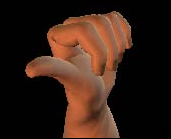
Left and Right Handedness in People
The majority of people are right handed. Some people can be ambidextrous, where they can use both hands, but most of us strongly favor the use of one hand over the other. Scientists agree that this is due primarily to biological and genetic reasons. Left handedness tends to run in families. People can learn to use their non dominant hand, in cases when they need to, so there may be some cultural and societal influences on which hand people favor. Until recently, it was thought that only humans had a dominant side, but studies are starting to show that the animal kingdom displays a preferance for one side of their body over another too.
Cats Have a Paw Preference
A new study from Queen’s University Belfast, in North Ireland, about the animal behavior of cats, has discovered that felines can be left or right paw dominant. The scientists at the university conducted several experiments using 42 cats ranging in age, up to 8 years old.
When given simple tasks, the cats could use either paw, but when the task was more complicated, the researchers found, they invariably used their dominant side. The study proved this in the 3 challenges they gave the cats. Two experiments were simple for the cats to achieve, and one was a bit more difficult.
Two of the studies, where the cats reached for a toy mouse, proved the cats to be ambidextrous. A third experiment using tuna in a jar that the cats had to retrieve from a jar, showed a clear paw preference. Among the female cats, 20 out of 21, were right pawed. Among the males, 20 out of 21 were left pawed. And the one male, was ambidextrous.
Paw Preference in Cats
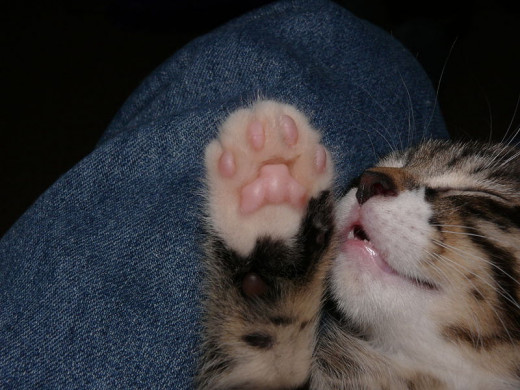
Is Your Pet Left or Right Handed?
It is believed, even among veterinarians, that pets do have a right or left paw preference. Using information about paw perference, may lead to science being able to predict which puppies will be better service and therapy dogs, by knowing which side of the brain is dominant. Chimpanzees and horses know their left from right.
How to tell what paw your pet prefers:
First you may need to do these tests 100 times over several days.
• Which paw does your dog offer if you ask them to give you their paw?
• Take a toy that interests your pet, or is filled with a treat and place it in the center of your dog’s field of vision. Which paw does your dog use to touch the toy?
• Fill a toy with something delicious and put it in the center of the dog’s visual field. Which paw does it use to touch the toy first? Which paw does the dog use to hold the toy?
• Put a treat under your sofa, just beyond your dog or cat’s reach. Which paw does it use to get it?
• Dangle a toy above your cat’s head. Which paw does it use to try to touch it?
• When you put a treat under a bowl, which paw does your pet use to move the bowl?
90% of humans are right handed. Of the 10% that are left handed, most are men. Higher levels of testosterone in the womb, has been associated with left handedness. Even in dogs that have not been neutered, it has been found, they have the same paw preference as felines. Male dogs favor their left paw, and female dogs favor their right paw. After the dogs have been neutered, there is no difference between the sexes. The researchers are not sure why there is a paw preference related to the sex of the animal, but they believe it may be related to the different demands required for hunting and parental care.
Is Your Dog Right or Left Pawed?
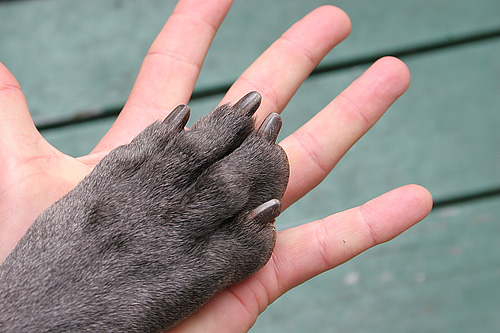
Is Your Dog Right or Left Pawed?
Until most recently, many scientists believed human beings were the only species who showed “lateralized behavior”, which is a strong preference for using the right or left hand. Now studies among animals are revealing that we are not the only ones who have a dominant hand. Many other animals including birds, fish, and other mammals show a preference for one side of their body over another side.
It can be seen when observing fish, that they will choose one direction over another to get away from a predator. You can see with parrots, that they will use a particular claw to pick something up. Even a frog will grab food in his vision faster on one side than another.
To test if your dog is left or right pawed, give them a toy that is filled with treats and place it several feet away from their paws. Which paw does the dog use to hold down or manipulate the toy? Which paw is on the top of the other paw? Watch them run outside or use the stairs and observe which foot they start off on.
A study done at the University of Bari, about which way dogs wag their tails, found that dogs wag their tail to the right when they are happy, and want to approach something. They wag their tails to the left when they are frightened, and want to retreat.
Primates and Left and Right Handedness
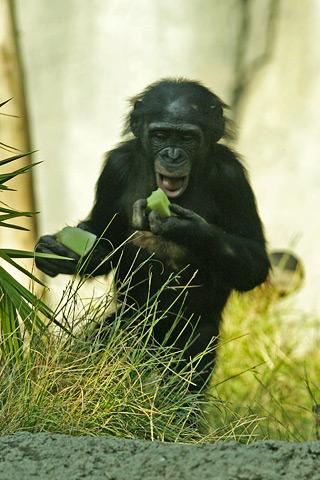
Primates and Hand Dominance
Animal psychologists have studied the New Caledonian crow. This crow makes tools from leaf twigs and from the leaf of the Pandanus tree, which is a long, narrow, and stiff leaf. These tools help it poke into the crevices of trees to yank out bugs and spiders and other food that live in the trees. This crow lives mainly on the island of Grand Terre in New Caledonia, which is an island in the Pacific, near Australia. Gavin Hunt, and animal psychologist studied these tools to see if the the markings on the remnants of the leaf they used were cut from left to right or right to left. The majority of the approximately 4,000 leaves he looked at showed the birds cut the leaf from left to right more often. Hunt concluded that the majority of these birds use their right eyes to carve out the tools. So the birds are right-eyed dominant.
It is believed by scientists that motor and speaking tools is dominant on one side of the brain as a way for nature to conserve energy and streamline development.
Horses show a tendency to prefer to use one side of their body too.
William McGrew, a professor of zoology and anthropology has studied chimpanzees in the wild to determine whether they have a dominant hand. He found that it was equally divided. Each individual primate had a hand preference, but it was not apparent the way it is in humans.
William Hopkins, a psychologist, who studied chimpanzees in captivity, stated that he has seen the majority of chimps use their right hand. In tests he has conducted, he gives the chimps a long tube with peanut butter inside. The chimps who hold the tube with their left hand and reach for the peanut butter with their right hand, he concluded is most likely right handed. Most of the chimpanzees handled the tube this way.
Wallabies are Marsupials
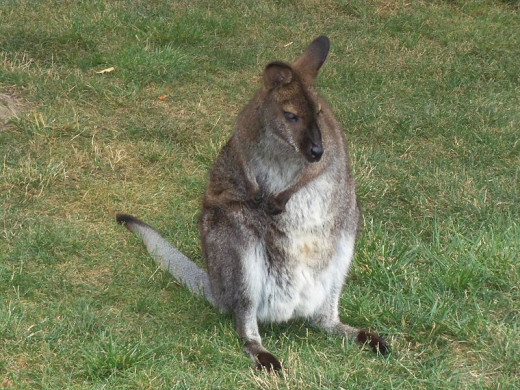
The Study of Animals Who Use Their Right and Left Limbs
A biological anthropologist, named M.K. Holder believes captivity plays a role in primate handedness. In the wild, he found that there was no majority of right handedness among apes. He believes the unnatural environment, the influence of humans, the artificial social surroundings, may affect the primate’s behavior to mimic human beings.
Humpback whales have shown to favor their right sides when catching prey and even when slappling the ocean surface. It seems like whales also use their right side of their jaws overwhelmingly more than their left jaw to gather food. Data gathered with 75 whales showed they used the right side of their jaw more often. Observation of toads have shown that they primarily use their right legs to remove a plastic balloon that researchers wrapped around the toad’s head. e The majority of cockatoos are left footed.
Fish, toads, and reptiles seem to favor their right eye, as do birds such as, pigeons, quails and chickens.
Several Russian zoologists. Andrey Giljov, Karina Karenina, and Yegor Malashichev studied marsupials, and whether or not they had a dominant side. Research had never been on marsupials.
Marsupial brains are different than most other animals. In mammals, sensory and motor cortices work independently in the brain. In marsupials, these parts overlap. Marsupial brains don’t have the corpus callosum, that mammals have. Corpus callosum connects the right and left hemispheres in the brain of mammals. The Russian scientists wanted to see if a particular marsupial, wallabies, had a limb preference. They studied 33 wallabies, 27 adults, and 6 juvenile wallabies, in 5 different zoos.
All of the wallabies were born in zoos. Their data easily determined that the wallabies had a dominant limb, as other animals and humans have shown. Among the adult wallabies studied, 20 were left handed, 2 were right handed, 5 had no preference. Wallabies showed a preference for using their right hands to support themselves, when standing on both feet. 95% of the marsupials showed no preference when on all fours.
Among the juveniles, they mostly used their right limbs to support themselves, and used their left arm to pull down their mother’s pouch., to groom themselves. They used their right limbs to handle objects and food. This study showed that even though there are major differences in the way marsupial brains are organized compared to other mammals, they just as commonly showed a limb preference as other animals.
Birds Have a Dominant Foot or Claw
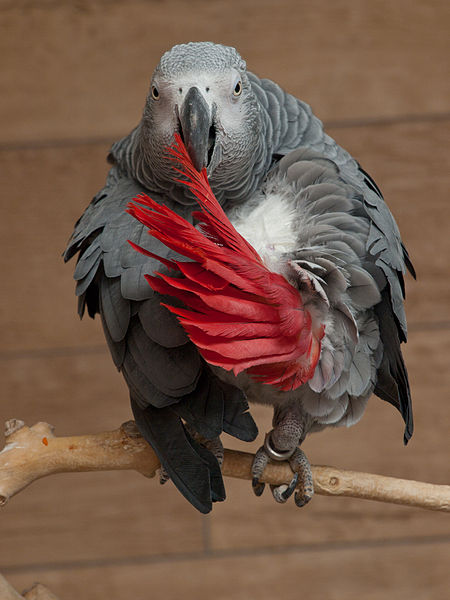
Why Do Some Animals Have a Hand Preference?
Scientists are trying to correlate their findings among animal limb preference. Many primates showed a hand preference.
Some primates did not have a limb preference. Scientists don’t know if limb preferences evolved before the brain hemispheres were split and this preference is due to a shared ancestry, known as homology, or they just happened to evolve similarly, known as convergence.
The Russian scientists speculate that this preference may have some connection to body posute. There seems to be more of a limb preference when the primates stood on 2 legs, compared to all 4 limbs. If the situation warrants the animal to use their arms to reach , they tended to show a limb preference.
Scientists can’t totally prove this theory because they have not found the mechanisms that would account for this preference, and so the reasons for limb dominance remain a mystery.










